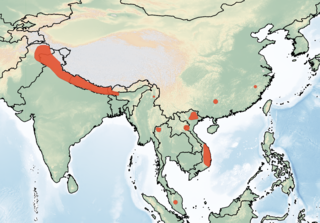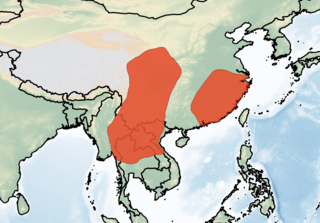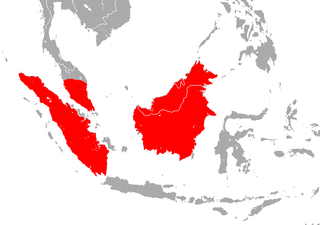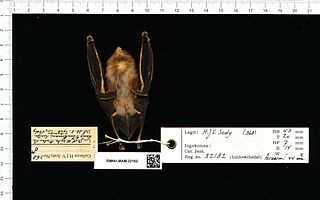
The dusky fruit bat is a species of bat found in Indonesia and Malaysia.
The little tube-nosed bat is a species of bat. An adult little tube-nosed bat has a body length of 4.0-4.6 cm, a tail length of 2.8-3.6 cm, and a wing length of 3.0-3.3 cm. The species is found across South and East Asia, from the Indian subcontinent to the Korean Peninsula.

The round-eared tube-nosed bat is a species of bat in the family Vespertilionidae from Central and Southeast Asia.

The common thick-thumbed bat is a species of vesper bat found in Brunei, Indonesia, Malaysia, Philippines, and Thailand.

The bronze tube-nosed bat is a species of vesper bat in the family Vespertilionidae. It is found only in Malaysia.
The dusky tube-nosed bat is a species of vesper bat in the family Vespertilionidae. It is found only in China.

Hutton's tube-nosed bat is a species of vesper bat in the family Vespertilionidae. It can be found in the following countries: Bhutan, China, India, Laos, Malaysia, Myanmar, Nepal, Pakistan, Thailand, and Viet Nam. It lives within an elevation of 1450 m to 2500 m. In Southeast Asia, the bat is considered to be uncommon. The bat is known to live in forests, roosting among the leaves of banana trees. Its habitat is threatened by deforestation for firewood and timber, as well as conversion to agricultural land.
The Ryukyu tube-nosed bat(Murina ryukyuana) is a species of vesper bat found only in Japan.

The brown tube-nosed bat is a species of vesper bat in the family Vespertilionidae. It can be found in the following countries: Brunei Darussalam, Indonesia, Malaysia, and the Philippines.

The Chinese pipistrelle is a species of vesper bat in the family Vespertilionidae. It is found in China, Laos, Thailand, and Vietnam.

The Borneo roundleaf bat or Bornean leaf-nosed bat is a species of bat in the family Hipposideridae. It is found in Borneo, Sumatra and Peninsular Malaysia. Hipposideros sabanus is a synonym of this species.

Ridley's leaf-nosed bat, Ridley's roundleaf bat, or Singapore roundleaf horseshoe bat is a species of bat in the family Hipposideridae. It is found in Brunei, Malaysia and Singapore. Its natural habitat is subtropical or tropical swamps. It is threatened by habitat loss.

The Dayak roundleaf bat, also known as the least roundleaf bat, is a species of bat in the family Hipposideridae. It is endemic to Indonesia and Malaysia.
Bat Conservation International (BCI) is an international nongovernmental organization working to conserve bats and their habitats through conservation, education, and research efforts.

Harrison's tube-nosed bat is a species of vesper bats (Vespertilionidae). Within the genus Murina, it belongs to the so-called 'cyclotis-group'.
The slender tube-nosed bat is a species of vesper bat in the family Vespertilionidae found only in Taiwan.
The Da Lat tube-nosed bat is a species of vesper bats (Vespertilionidae). It is found in Vietnam, on the Da Lat plateau.












